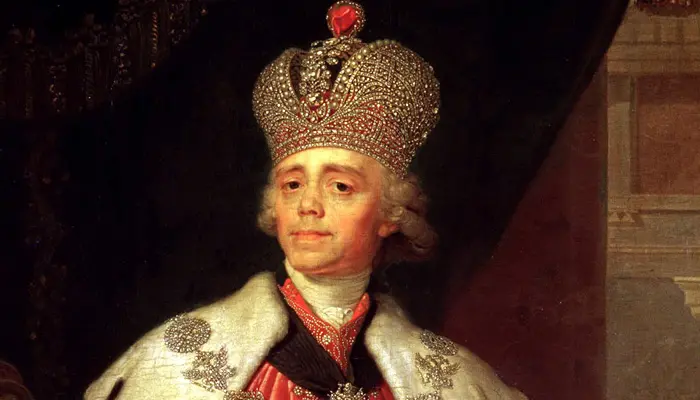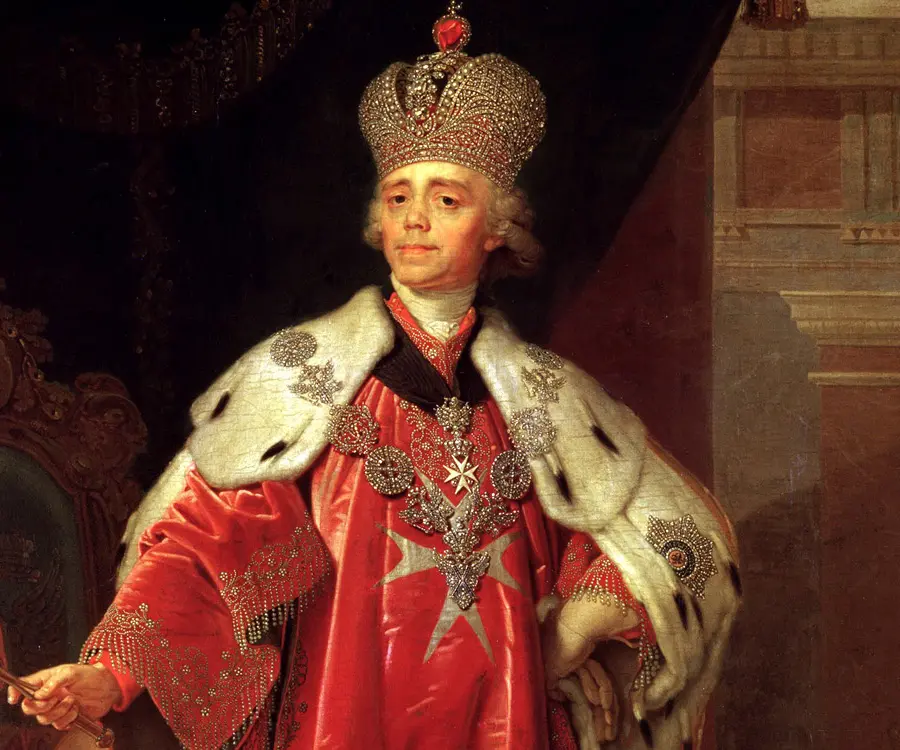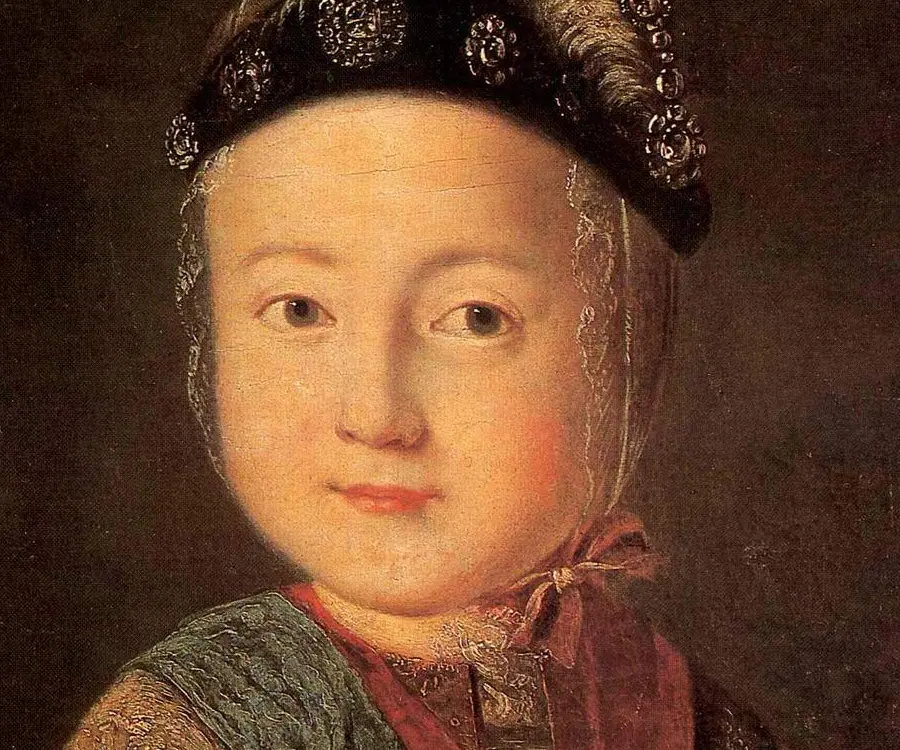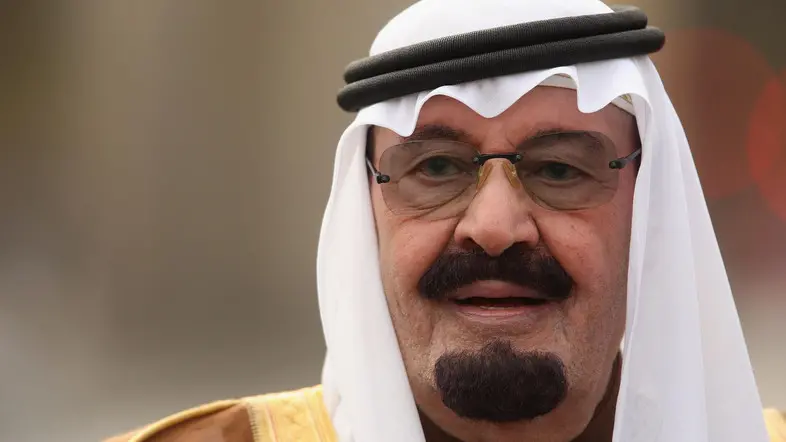
Paul I of Russia - Kings, Life Achievements and Personal Life
Paul I of Russia's Personal Details
Emperor Paul I ruled Russia for a short span of five years from 1796 to 1801
| Information | Detail |
|---|---|
| Birthday | October 1, 1754 |
| Died on | March 23, 1801 |
| Nationality | Russian |
| Famous | Historical Personalities, Emperors & Kings, Emperor (1796-1801), Emperors, Kings |
| Spouses | Princess Sophie Dorothea of Württemberg, Wilhelmina Louisa of Hesse-Darmstadt |
| Known as | Pavel Petrovich Romanov |
| Childrens | atherine Pavlovna, Emperor Alexander I, Emperor Nicholas I, Grand Duchess, Grand Duchess Alexandra Pavlovna, Grand Duchess Anna Pavlovna, Grand Duchess Elena Pavlovna, Grand Duchess Maria Pavlovna, Grand Duchess Olga Pavlovna, Grand Duke Konstantin Pavlovich, Grand Duke Michael Pavlovich |
| Birth Place | St Petersburg, Russia |
| Gender | Male |
| Father | Grand Duke Peter (Emperor Peter III) |
| Mother | Grand Duchess Catherine, Empress Catherine the Great |
| Sun Sign | Libra |
| Born in | St Petersburg, Russia |
| Famous as | Russian Emperor (1796-1801) |
| Died at Age | 46 |
Paul I of Russia's photo
Who is Paul I of Russia?
Emperor Paul I ruled Russia for a short span of five years from 1796 to 1801. He was the only son of Emperor Peter III and Empress Catherine II the Great. His relationship with his mother was strained because his grand aunt, Empress Elizabeth, had preferred him as a successor to the throne and ignored Catherine. After Elizabeth died, Peter III ruled for a short while and was succeeded by Catherine II the Great as Empress of Russia. Ironically, she too ignored her son, Paul, when it came to identifying an heir to the throne and preferred her grandson Alexander. However, Catherine died a sudden death and was succeeded by Paul who gave up his mother’s expansionist policies and tried to negotiate peace. His diplomacy failed and he ended up opposing both the British and the French. He was fond of pomp and show and made several reforms in the army that were not liked by his generals. He also introduced certain unpopular reforms in order to keep a check on the nobility that ultimately led to his assassination by some of his disgruntled generals. He had 10 children of which nine survived and his eldest son, Alexander, took over as Emperor of Russia after his death.
// Famous Kings
Sundiata Keita
Sundiata Keita was the founder of the Mali Empire in West Africa. This biography profiles his childhood, early life, struggles, founding of empire, rule, administration, achievements and also gives some fun facts.
Ashoka
Ashoka was the third emperor of the Mauryan Dynasty and ruled almost the entire Indian subcontinent. This biography profiles his childhood, life, reign, achievements and timeline
Murad IV
Murad IV was one of the mighty Sultans in the history of the Ottoman Empire. This biography profiles his childhood, family, accession, rule, administration and timeline.
Childhood & Early Life
Paul was born on 01 October 1754 in Saint Petersburg to Grand Duke Peter (later Emperor Peter III) and Grand Duchess Catherine (later Empress Catherine II the Great of Russia). Catherine later fell out with Empress Elizabeth, who took young Paul under her fold. It was rumoured that Paul’s actual father was a court member named Sergei Saltykov, as Peter and Catherine were childless for the first ten years of their marriage.
The Empress put him under the charge of her trusted governor, Nikita Ivanovich Panin, and arranged for his private tutoring to groom him to become the future Emperor of Russia. He also attended Council to get acquainted with the duties of an Emperor.
However, the Empress lacked experience in bringing up children, as she had no children of her own. In fact, Paul was often left unattended because his own mother felt ignored by the Empress and built up hatred towards her son.
Paul was a good looking and intelligent boy. However, his tutors found him to be a bit rash in his ways. He was sickly as a child and lacked company of his age in the palace of Empress Elizabeth, where he was brought up.
Career
He travelled around Western Europe with his wife from 1781 to 1782 and was gifted the Gatchina Estate in 1783, where he raised a brigade worth of soldiers whom he trained on the Prussian model. This was not a popular system in Russia.
He had a strained relationship with his mother, and when Catherine the Great became Empress of Russia, she did not involve Paul in governing the Empire. He was openly against her expansionist policies and advocated a defensive outlook, which was contrary to his mother’s policies. This was looked upon as a threat by the Empress.
Empress Catherine tried to encourage her grandson, Alexander, to ascend the throne after her. However, Alexander remained loyal to Paul when it came to succession.
Catherine the Great suffered a stroke on 17 November 1796 and died a sudden death. In the absence of a statement from the late Empress, Paul took over as the Emperor of Russia, with the title Paul I of Russia. The first thing he did was to promulgate the Pauline Laws, which specified that the throne would automatically go to the next male heir in the Romanov dynasty.
The next step he took was to recall his army that was poised to attack Persia as per the plans of Catherine the Great. In order to put to rest rumours about him being an illegitimate son, he reburied his father alongside his mother with great pomp and show in the Peter and Paul Cathedral.
During the next few years he reversed a number of his mother’s harsh policies and allowed her best known critique, Radishchev, to come back from exile in Siberia. Though he was idealistic and generous in his ways, he also displayed a lot of vindictiveness.
He took it upon himself to reform the Russian nobility, whom he considered to be corrupt and crafty. He considered this necessary in order to avoid economic rescission and revolution of the masses. Those who fell into line were rewarded richly, while others were persecuted.
He also introduced some unpopular reforms in the Army that included change in their uniform. He was fond of ceremonial parades with pomp and show that were not in sync with the Russian Army of that time. His Infantry Code, which was a set of rules more inclined towards ceremonials, was disregarded by his generals.
He hated the French and their expansionist policies. However, due to differences in opinion with his mother, he initially withdrew the troops promised by her to Briton and Austria to defeat France. He then tried to mediate between Austria and France using the diplomatic path to make peace.
He was averse to the French revolution and saw France as a threat to Russia. He gave asylum to French nobility and tried to get them back to power. When Napoleon captured Malta he rallied around the rest of Europe to try and defeat the French. The combined forces managed to push the French out of Italy, but Paul fell out with Austria as he wanted to restore the monarchy, while Austria was looking at territorial gains.
He then joined forces with the British to try and attack France through the Netherlands. However, the allies faced tough resistance and had to face defeat. Later his relations with the British soured and he turned to the peace loving Scandinavian countries of Denmark and Sweden.
Iran had invaded Georgia and captured Tbilisi. However, the Persian ruler, Agha Mohammad Khan was assassinated and Russia got involved in the affairs of Persia. Paul I signed an order to incorporated Georgia in the Russian Empire, which was implemented by his son, Alexander.
On the administrative front he brought in reforms in favour of the common man and banned corporal punishment for the lower class. He endeavoured to bring in more accountability among the upper class that was not liked by the nobility who conspired to have him assassinated.
On the night of 23 March 1801, he was murdered by a group of disgruntled army men headed by General Bennigsen, who entered his bedroom and attacked him with swords. This brought an end to five years of his monarchy. He was succeeded by his son Alexander I, who spared his assassins after he came to power.
Major Works
Paul I brought in several reforms in the Army and administration in order to curb the powers of the nobility, whom he considered to be corrupt. He instilled more of bureaucracy to keep a check on the functioning of his government. However, his policies were not popular and led to his ultimate assassination.
Personal Life & Legacy
His mother arranged his first marriage to Natalia Alexeievna, who was the daughter of Ludwig IX, Landgrave of Hesse-Darmstadt, in 1773. Unfortunately she died during child birth of their first offspring.
In October 1776, he married for the second time to Sophia Dorothea from the German state of Wurttemberg. She was a beautiful woman who later came to be known as Maria Feodorovna. They had their first child, named Alexander, a year after their marriage and were gifted the Pavlovsk palace as a token of approval by the Empress.
However, the differences with his mother persisted and he always received second grade treatment from Empress Catherine the Great, who showered expensive gifts on her lovers and ignored him.
Paul chose to live a private life, away from the Russian centre of power, in Gatchina with his family. Here, he had his second son named Constantine. Both his children were taken under charge by Empress Catherine the Great, just as Empress Elizabeth had done with him. He had a total of ten children of which nine survived.
When he took over as Emperor of Russia he fell in love with Anna Lopukhina who became his mistress and for whom he built three palaces around his capital.
Trivia
His pug nose took shape due to an attack of typhus in his youth.
Paul’s father Peter III was of Romanov decent, while his mother Catherine the Great belonged to the Rurik dynasty.
He ordered for the bones of his mother’s lover, Grigory Potemkin, to be dug out of his grave and scattered.
He had great respect for the Polish people and was seen as their sympathizer.
The 2003 Russian film ‘Poor Poor Paul’ portrays the life of Paul I, focussing on his assassination. The movie won the Michael Tariverdiev Prize for best sound track.
Before he was assassinated, it was rumoured that he had gone insane.
// Famous Emperors
Sundiata Keita
Sundiata Keita was the founder of the Mali Empire in West Africa. This biography profiles his childhood, early life, struggles, founding of empire, rule, administration, achievements and also gives some fun facts.
Ashoka
Ashoka was the third emperor of the Mauryan Dynasty and ruled almost the entire Indian subcontinent. This biography profiles his childhood, life, reign, achievements and timeline
Murad IV
Murad IV was one of the mighty Sultans in the history of the Ottoman Empire. This biography profiles his childhood, family, accession, rule, administration and timeline.
Paul I of Russia biography timelines
- // 1st Oct 1754Paul was born on 01 October 1754 in Saint Petersburg to Grand Duke Peter (later Emperor Peter III) and Grand Duchess Catherine (later Empress Catherine II the Great of Russia). Catherine later fell out with Empress Elizabeth, who took young Paul under her fold. It was rumoured that Paul’s actual father was a court member named Sergei Saltykov, as Peter and Catherine were childless for the first ten years of their marriage.
- // 1773His mother arranged his first marriage to Natalia Alexeievna, who was the daughter of Ludwig IX, Landgrave of Hesse-Darmstadt, in 1773. Unfortunately she died during child birth of their first offspring.
- // Oct 1776In October 1776, he married for the second time to Sophia Dorothea from the German state of Wurttemberg. She was a beautiful woman who later came to be known as Maria Feodorovna. They had their first child, named Alexander, a year after their marriage and were gifted the Pavlovsk palace as a token of approval by the Empress.
- // 17th Nov 1796Catherine the Great suffered a stroke on 17 November 1796 and died a sudden death. In the absence of a statement from the late Empress, Paul took over as the Emperor of Russia, with the title Paul I of Russia. The first thing he did was to promulgate the Pauline Laws, which specified that the throne would automatically go to the next male heir in the Romanov dynasty.
- // 23rd Mar 1801On the night of 23 March 1801, he was murdered by a group of disgruntled army men headed by General Bennigsen, who entered his bedroom and attacked him with swords. This brought an end to five years of his monarchy. He was succeeded by his son Alexander I, who spared his assassins after he came to power.
- // 2003The 2003 Russian film ‘Poor Poor Paul’ portrays the life of Paul I, focussing on his assassination. The movie won the Michael Tariverdiev Prize for best sound track.
// Famous Emperors & Kings
Sundiata Keita
Sundiata Keita was the founder of the Mali Empire in West Africa. This biography profiles his childhood, early life, struggles, founding of empire, rule, administration, achievements and also gives some fun facts.
Ashoka
Ashoka was the third emperor of the Mauryan Dynasty and ruled almost the entire Indian subcontinent. This biography profiles his childhood, life, reign, achievements and timeline
Murad IV
Murad IV was one of the mighty Sultans in the history of the Ottoman Empire. This biography profiles his childhood, family, accession, rule, administration and timeline.
Xerxes I
Xerxes I (Xerxes the Great) was the fourth and the most famous king of the Archaemenid dynasty of Persia. This biography profiles his childhood, family, personal life, life history, achievements, campaigns, administration, death and other facts.
Sargon of Akkad
Sargon of Akkad, also called ‘Sargon the Great’, ‘Sarru-Kan’ and ‘Shar-Gani-Sharri’, was the founder and first king of the Akkadian Empire. This biography profiles his childhood, life, rule, administration, timeline, and gives some fun facts.
Abdullah of Saudi Arabia
Abdullah bin Abdulaziz Al Saud was the King of Saudi Arabia from 2005 to 2015 and the third wealthiest head of state in the world. Find more facts about his life, childhood and timeline.
Paul I of Russia's FAQ
What is Paul I of Russia birthday?
Paul I of Russia was born at 1754-10-01
When was Paul I of Russia died?
Paul I of Russia was died at 1801-03-23
Where was Paul I of Russia died?
Paul I of Russia was died in St Michael's Castle
Which age was Paul I of Russia died?
Paul I of Russia was died at age 46
Where is Paul I of Russia's birth place?
Paul I of Russia was born in St Petersburg, Russia
What is Paul I of Russia nationalities?
Paul I of Russia's nationalities is Russian
Who is Paul I of Russia spouses?
Paul I of Russia's spouses is Princess Sophie Dorothea of Württemberg, Wilhelmina Louisa of Hesse-Darmstadt
Who is Paul I of Russia childrens?
Paul I of Russia's childrens is atherine Pavlovna, Emperor Alexander I, Emperor Nicholas I, Grand Duchess, Grand Duchess Alexandra Pavlovna, Grand Duchess Anna Pavlovna, Grand Duchess Elena Pavlovna, Grand Duchess Maria Pavlovna, Grand Duchess Olga Pavlovna, Grand Duke Konstantin Pavlovich, Grand Duke Michael Pavlovich
Who is Paul I of Russia's father?
Paul I of Russia's father is Grand Duke Peter (Emperor Peter III)
Who is Paul I of Russia's mother?
Paul I of Russia's mother is Grand Duchess Catherine, Empress Catherine the Great
What is Paul I of Russia's sun sign?
Paul I of Russia is Libra
How famous is Paul I of Russia?
Paul I of Russia is famouse as Russian Emperor (1796-1801)








